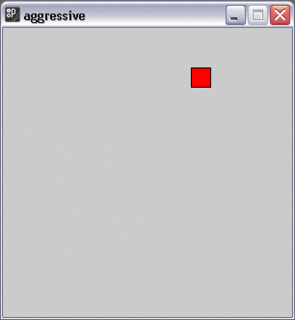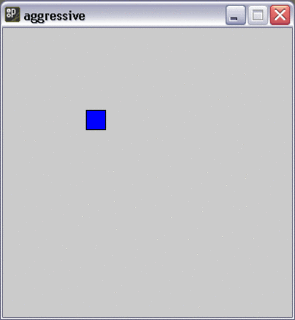topic of the day: ambiguity and the paradox of play...
ok i must firstly confess... i DIDN'T do the William Gaver reading... (i confess... I'M SORRY!!!!!)
anyway, since i can't make up anything about mr gaver's article (without feeling guilty)... i shall just jump straight into Zimmerman's "Narrative, Interactivity, Play and Games"
Mr Z (i'm too lazy to type the full name *grin*) claims that games are narrative systems i.e. they have have 'storylines'. and as always for everyone who comes up with a theory (just like the way Mr Z did), there are detractors who think he's wrong.
The claims are that games like tetris (which fits the definition of a game basically because they have rules, clear goals and a winning / losing condition - which is a perfectly fine one by the way) have no narrative system.
but since, like many things, definitions can vary, Mr Z's own definition is as such: "A game is a voluntary interactive activity, in which one or more players follow rules that constrain their behaviour, enacting an artificial conflict that ends in a quantifiable outcome".
as we can see, the definitions do vary. Mr Z's detractors have a more descriptive and functional definition of games, whereas Mr Z has what is a more human-oriented definition.
ok, before we swing off tangent here...
I'm inclined to agree with Mr Z. After reading about his narrative system explanation of Ms Pac Man (which sounded so PHILOSOPHICAL), if you go along the same lines, it IS possible to use this framework to define Tetris with Mr Z's definition (ridiculous as i think it sounds).
So let's take Tetris. you COULD say it's about life and death, and everything fitting nicely together (well that IS the aim of the game). It's also about not panicking under pressure (since the blocks come down faster and faster at the higher the levels you go).
So ta-da! there you have it. Narrative system applied to Tetris (somehow i think it isn't very convincing).
Wednesday, October 19, 2005
Wednesday, October 05, 2005
of screenshots and interactivity...
topic of the day: static screenshots... just imagine they're gonna move (or supposed to anyway)...
screenshot1: aggressive mode (even though it's a still... imagine the red square wobbling)


screenshot 2: passive mode (even if it isn't moving... it's supposed to move slowly towards the bottom right corner)
with regard to how interactive the object is (which changes between 2 states - aggressive and passive), i guess it's pretty much just rective... then again looking at the code just makes it seems complicated... but it isn't (yet when i show some of my friends - who know nuts about programming - they're pretty impressed by it... which is weird... but i guess they haven't seen the full potential of what can be done with processing).
the object just reacts to user input (which isn't much, considering all it takes is to click a button), so if we were to use Mr Golan Levin's creiteria, then unfortunately it would fall waaaay short.
screenshot1: aggressive mode (even though it's a still... imagine the red square wobbling)


screenshot 2: passive mode (even if it isn't moving... it's supposed to move slowly towards the bottom right corner)
with regard to how interactive the object is (which changes between 2 states - aggressive and passive), i guess it's pretty much just rective... then again looking at the code just makes it seems complicated... but it isn't (yet when i show some of my friends - who know nuts about programming - they're pretty impressed by it... which is weird... but i guess they haven't seen the full potential of what can be done with processing).
the object just reacts to user input (which isn't much, considering all it takes is to click a button), so if we were to use Mr Golan Levin's creiteria, then unfortunately it would fall waaaay short.
Subscribe to:
Posts (Atom)